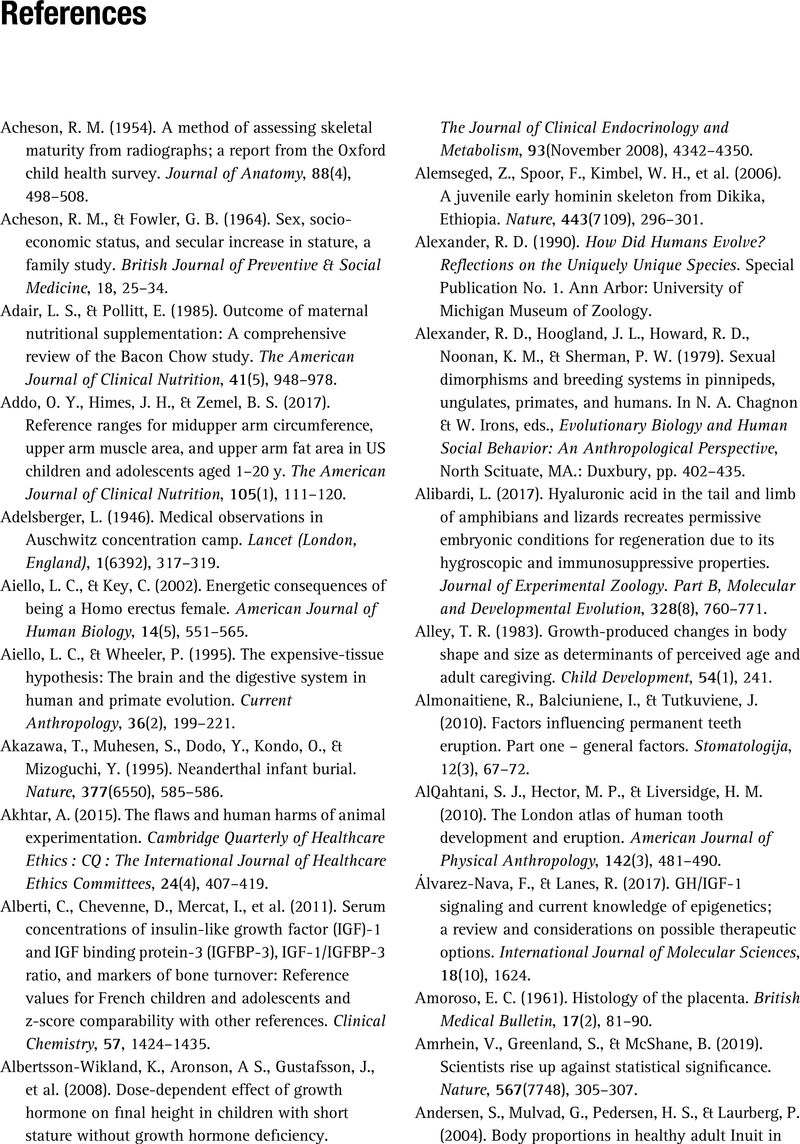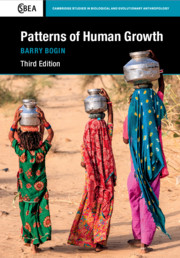Book contents
- Patterns of Human Growth
- Cambridge Studies in Biological and Evolutionary Anthropology
- Patterns of Human Growth
- Copyright page
- Dedication
- Contents
- Acknowledgments
- Introduction
- 1 Background to the Study of Human Growth
- 2 Basic Principles of Human Growth
- 3 The Evolution of Human Growth
- 4 Evolution of the Human Life Cycle
- 5 Growth Variation in Living Human Populations
- 6 Genetic and Neuroendocrine Regulation of Human Growth
- 7 What Makes People Grow?
- 8 A Biocultural View of Human Growth
- Glossary
- References
- Index
- References
References
Published online by Cambridge University Press: 13 November 2020
- Patterns of Human Growth
- Cambridge Studies in Biological and Evolutionary Anthropology
- Patterns of Human Growth
- Copyright page
- Dedication
- Contents
- Acknowledgments
- Introduction
- 1 Background to the Study of Human Growth
- 2 Basic Principles of Human Growth
- 3 The Evolution of Human Growth
- 4 Evolution of the Human Life Cycle
- 5 Growth Variation in Living Human Populations
- 6 Genetic and Neuroendocrine Regulation of Human Growth
- 7 What Makes People Grow?
- 8 A Biocultural View of Human Growth
- Glossary
- References
- Index
- References
Summary

- Type
- Chapter
- Information
- Patterns of Human Growth , pp. 515 - 560Publisher: Cambridge University PressPrint publication year: 2020

